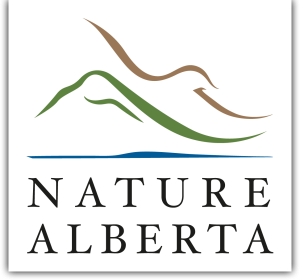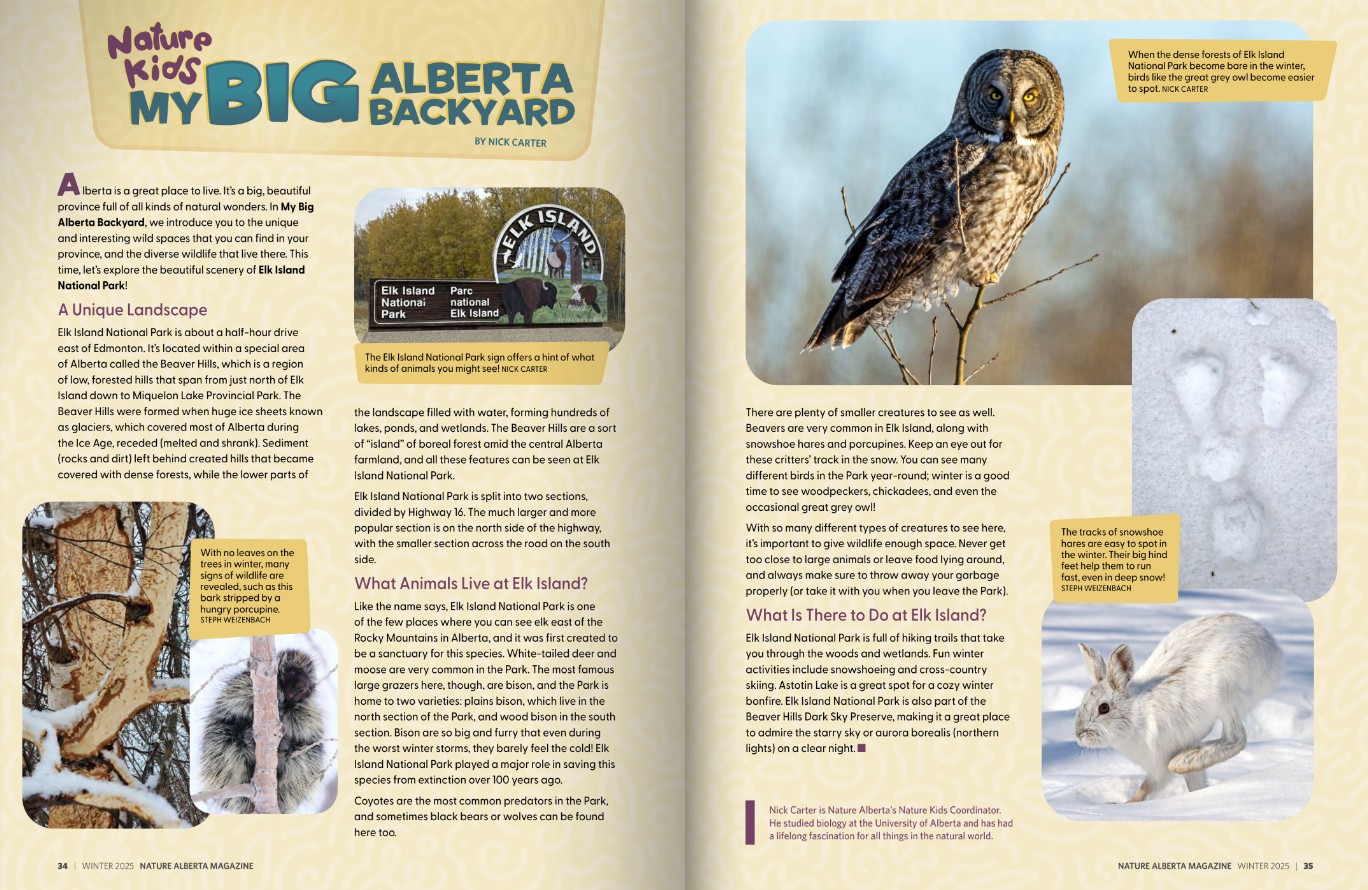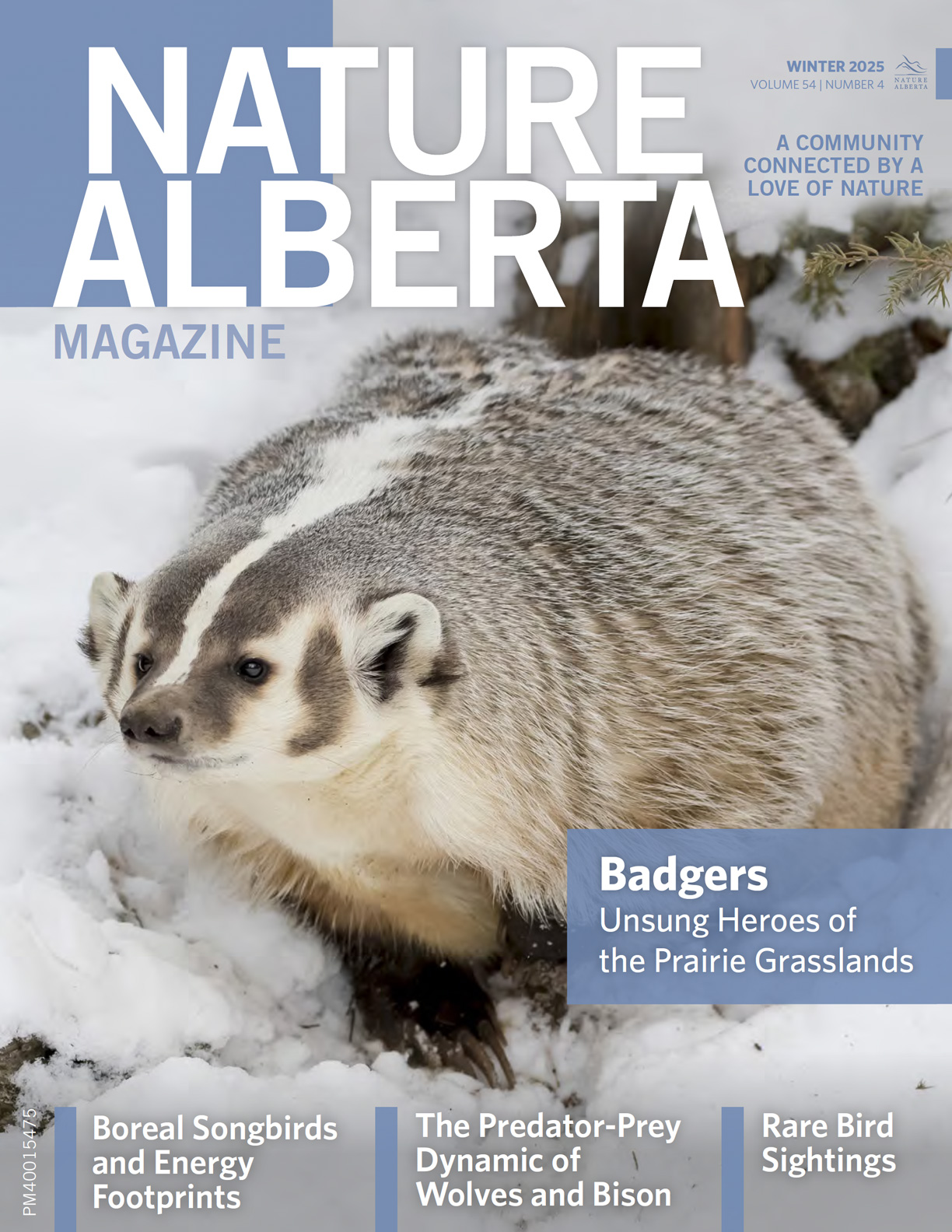My BIG Alberta Backyard: Elk Island National Park
11 February 2025
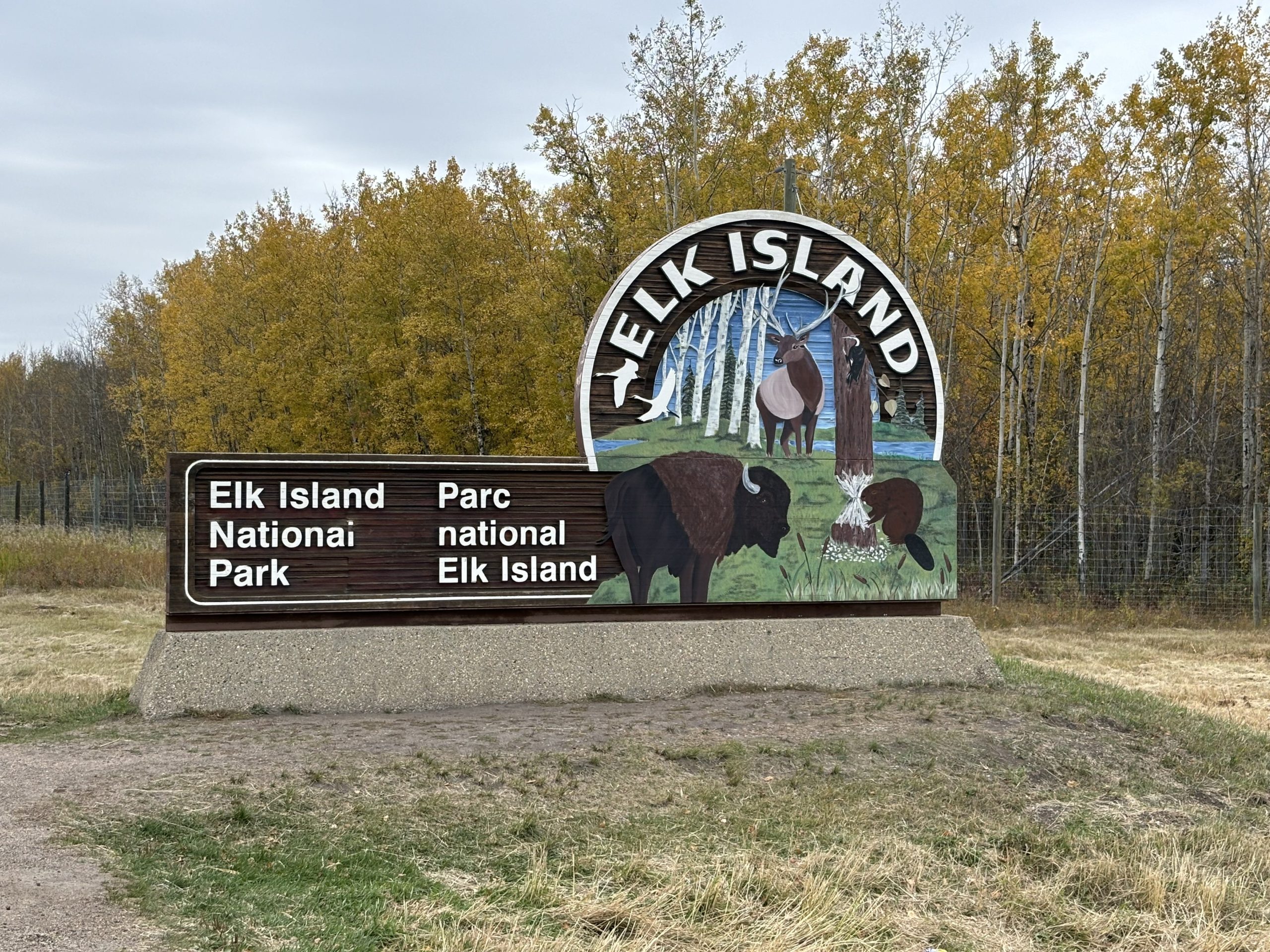
By Nick Carter
Alberta is a great place to live. It’s a big, beautiful province full of all kinds of natural wonders. In My Big Alberta Backyard, we introduce you to the unique and interesting wild spaces that you can find in your province, and the diverse wildlife that live there. This time, let’s explore the beautiful scenery of Elk Island National Park!
A Unique Landscape
Elk Island National Park is about a half-hour drive east of Edmonton. It’s located within a special area of Alberta called the Beaver Hills, which is a region of low, forested hills that span from just north of Elk Island down to Miquelon Lake Provincial Park. The Beaver Hills were formed when huge ice sheets known as glaciers, which covered most of Alberta during the Ice Age, receded (melted and shrank). Sediment (rocks and dirt) left behind created hills that became covered with dense forests, while the lower parts of the landscape filled with water, forming hundreds of lakes, ponds, and wetlands. The Beaver Hills are a sort of “island” of boreal forest amid the central Alberta farmland, and all these features can be seen at Elk Island National Park.
Elk Island National Park is split into two sections, divided by Highway 16. The much larger and more popular section is on the north side of the highway, with the smaller section across the road on the south side.
What Animals Live at Elk Island?
Like the name says, Elk Island National Park is one of the few places where you can see elk east of the Rocky Mountains in Alberta, and it was first created to be a sanctuary for this species. White-tailed deer and moose are very common in the Park. The most famous large grazers here, though, are bison, and the Park is home to two varieties: plains bison, which live in the north section of the Park, and wood bison in the south section. Bison are so big and furry that even during the worst winter storms, they barely feel the cold! Elk Island National Park played a major role in saving this species from extinction over 100 years ago.
Coyotes are the most common predators in the Park, and sometimes black bears or wolves can be found here too.
There are plenty of smaller creatures to see as well. Beavers are very common in Elk Island, along with snowshoe hares and porcupines. Keep an eye out for these critters’ track in the snow. You can see many different birds in the Park year-round; winter is a good time to see woodpeckers, chickadees, and even the occasional great grey owl!
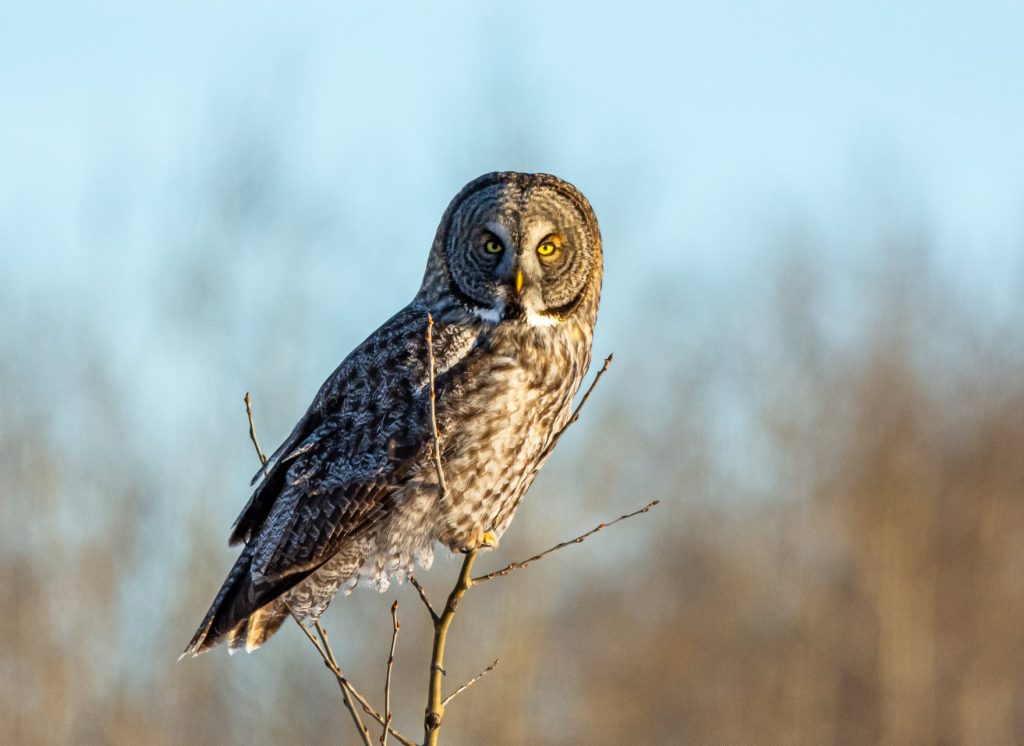
Great Grey Owl: When the dense forests of Elk Island National Park become bare in the winter, birds like the great grey owl become easier to spot. NICK CARTER
With so many different types of creatures to see here, it’s important to give wildlife enough space. Never get too close to large animals or leave food lying around, and always make sure to throw away your garbage properly (or take it with you when you leave the Park).
What Is There to Do at Elk Island?
Elk Island National Park is full of hiking trails that take you through the woods and wetlands. Fun winter activities include snowshoeing and cross-country skiing. Astotin Lake is a great spot for a cozy winter bonfire. Elk Island National Park is also part of the Beaver Hills Dark Sky Preserve, making it a great place to admire the starry sky or aurora borealis (northern lights) on a clear night.
Read the Original Article for this Post
For a richer reading experience, view this article in the professionally designed online magazine with all images and graphs in place.
This article originally ran in the Winter 2025 issue of Nature Alberta Magazine (Vol. 54 | No. 4).
